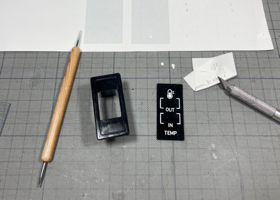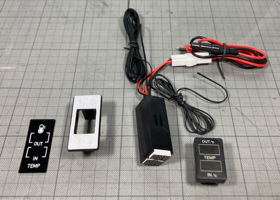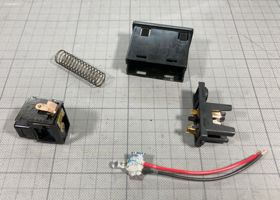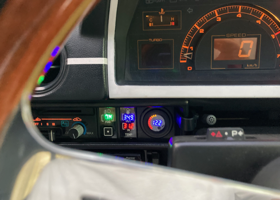« HONDA CITY CABRIOLET TURBO2
82. Interior completed for now
81. Thermometer with an original panel
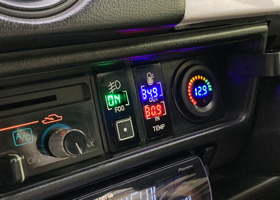
I put the fog light switch in the blank panel section where there are two locations, and since one of them was free, I modified the blank panel to install a digital temperature gauge that can display the temperature inside and outside the car.
When checked side by side with the fog light switch panel, the surface texture and layout were not quite right, so the fog light switch panel was also remade.
The fog light switch was too dark with the original filament bulb, so a green high-intensity LED was hot-bonded to the divider board inside the switch to adjust the position and illumination.
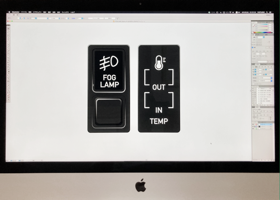
Place the sign alongside the previously made fog light switch and design the sign to align with the LED display portion of the thermometer.
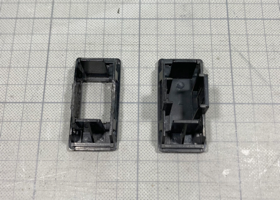
Drill holes at the display locations and cut ribs of the back of the blank panel so that it can be mounted on the thermometer unit .
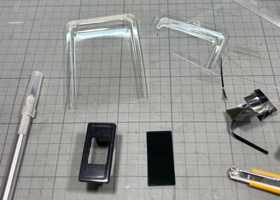
The sheet to be applied to the front side is cut from the plastic container in which the phone cover was housed, and the smoke film is applied.
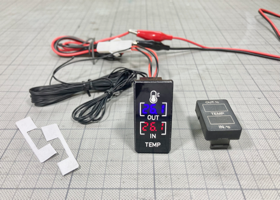
The blank panel and the thermometer unit are combined, and a sheet with a signature was attached.
The LED emitting surface is slightly set back, so it looks one-sided unless viewed from the front.
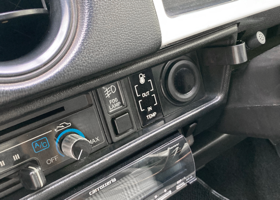
When the switch is set and checked again, the texture is different from that of the fog lamp switch, and there is no sense of unity in the sign.
In other CITY equipped with rear wipers, washers, and defoggers, this is where the switch for that goes. The Cabriolet does not have them, so they were left blank.
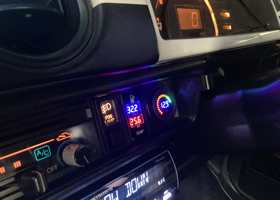
When lit, it is not at the correct height, which is unfortunate.
The choke was originally attached on the right side of the air temperature gauge, and since the turbo engine was transplanted and changed from carburetor to injection, the choke was removed and the voltmeter was housed.
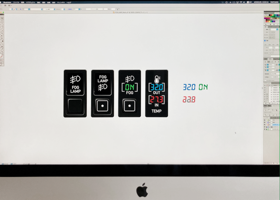
I decided to redesign the fog light switch and studied the layout.
The left end was original, next adjusted the layout and size and decorated the push buttons. Last, we did the same for the thermometer and sign, and designed the 'ON' sign to match the digital typeface.
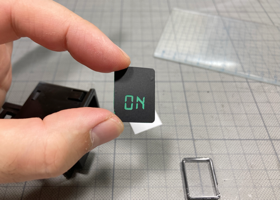
For the lighted sign inside, a black cutting sheet with letters cut out of it was attached to a transparent sheet, and a green transparent cellophane sheet was attached from the back.
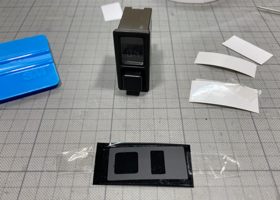
To prevent light from leaking from the illuminated sign, we masked all but the sign and push-switch areas with black cutting sheets.
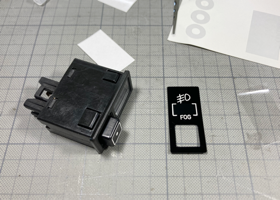
Using the opening in the black sticker affixed for the mask as a guide, cut out the push switch portion and affix the sign cut from the white cutin sheet.
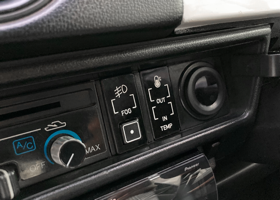
Attach the sheet to the switch and set again. Since there are buttons, they cannot be exactly the same, but I think we can give the impression that they are all in the same design.
